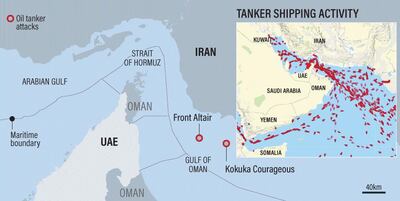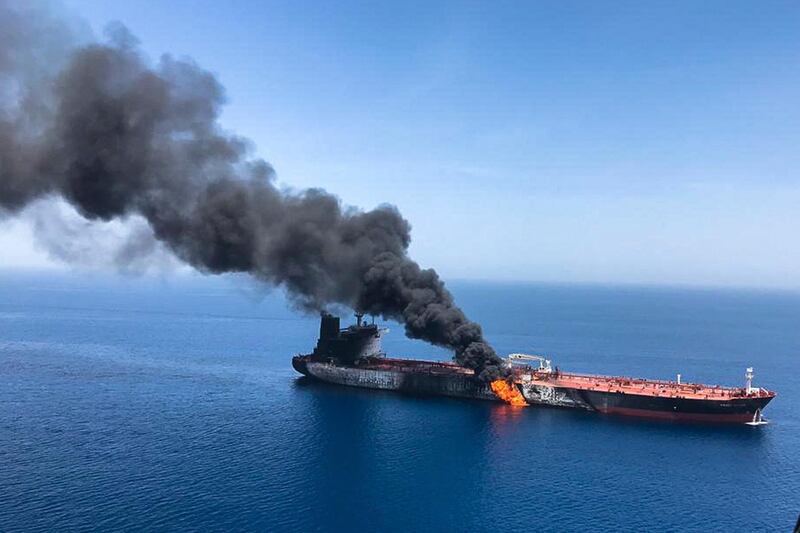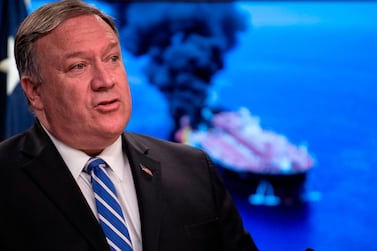Already high tension between the US and Iran ramped up again last week following an attack on two tankers in the Gulf of Oman, close to the Strait of Hormuz. It follows a similar nearby attack last month, with the US blaming Iran for both. furthering fears that the two are edging towards a bigger escalation. But what is the Strait of Hormuz and why is this small strip of water so important?
What is the Strait of Hormuz?
It is a narrow channel, approximately 30 miles wide at the narrowest point, between the Omani Musandam Peninsula and Iran.
Why is it of global interest?
It is one of the most important strategic waterways in the world as it links the Middle East’s crude oil producers with key markets in the rest of the world, making it vital to the global supply of oil. Most crude exported from Saudi Arabia, Iran, the UAE, Kuwait and Iraq is shipped through the strait, as well as nearly all the liquefied natural gas produced by its biggest exporter, Qatar.
In 2017, around 17.2 million barrels of crude and natural-gas condensates – used in heavy oil production – were estimated to have been shipped through the strait. With global oil consumption at about 100 million barrels per day, that means almost a fifth of it passes through here. That’s more than any similar choke points, such as the Suez Canal in Egypt and the Strait of Malacca between Malaysia and Sumatra.
Instability could mean higher global oil prices, adding to the running costs of certain industries and raising petrol prices. Iran’s recent actions could also be considered as an act of war.

Whose territory is it?
To pass through the strait, ships must sail through the territorial waters of Oman and Iran. The UAE also lies to the south of the waterway. It is of particular importance to Iran as it is its key oil export route and therefore crucial to their economy. Earlier this year, US President Donald Trump decided to end the sanction exemptions for countries buying oil from Iran and say their policy is for zero Iranian imports. Tehran has threatened that if Mr Trump halts its exports, it would make sure that no oil can be exported from the Arabian Gulf.
To transit through the Strait of Hormuz all maritime traffic, including the US Navy, must sail through Iranian territorial waters. Yet the US Fifth Fleet, based in Bahrain, is tasked with protecting commercial ships in the area.
Has there been trouble there before?
Similar attacks happened during the Tanker War of the 1980s, when Iran and Iraq tried to stop each others’ exports. Over 200 tankers were attacked and 55 were sunk. A US warship shot down an Iranian airliner over the straight in 1988, killing 290, and there have been a few more minor attacks on tankers. Threats to impose controls on the strait have frequently featured in Iranian rhetoric in an effort to protect itself from either military action or sanctions.
Can the Strait of Hormuz be bypassed?
The UAE and Saudi Arabia have sought to find other routes to transport their oil, including building more pipelines to transport it to the northern emirate of Fujairah, in the Gulf of Oman, to Oman itself and Yemen. The proposed Qatar-Turkey pipeline would take natural gas straight to Europe over land, but would cause upset to Europe’s biggest gas supplier, Russia.






